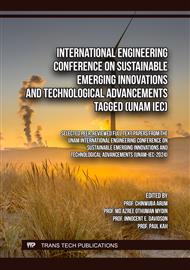p.87
p.99
p.113
p.123
p.133
p.145
p.157
p.169
p.179
Detonation Cell Width Prediction Model Based on Gaseous Detonation Experimental Data
Abstract:
The detonation cell size is an important parameter for evaluating gas detonations and developing techniques for explosion damage mitigation. The resource-intensive experiments on gas detonation are carried out under limited test conditions, often leading to interpolating, or extrapolating from available datasets. Existing detonation cell width prediction models using Machine Learning models either use chemical-based input parameter computed using Cantera or CHEMKIN II packages. Parameters defined by chemical mechanisms introduce both, model errors and parameter uncertainties that could affect the prediction accuracy. In the present paper, experimental gaseous detonation data for hydrogen-oxygen and hydrogen-air mixtures are statistically analyzed to establish features for detonation cell widths prediction using machine learning models. Machine learning models are trained and validated using experimental data available from literature and internal tests. SHapley Additive exPlanations method is used for feature impacts analysis on model predictions. For non-diluted mixtures, detonation cell widths prediction based on initial mixture composition, pressure, and temperature are made for hydrogen-air mixtures (mean absolute error of 0.02 mm) and for stoichiometric hydrogen-oxygen mixtures (mean absolute error of 0.16 mm) at an averaged 99% accuracy. The models’ performance is validated against most recent models and new datasets and the experimentally reported detonation cell width measurements uncertainties.
Info:
Periodical:
Pages:
145-155
Citation:
Online since:
November 2025
Price:
Сopyright:
© 2025 Trans Tech Publications Ltd. All Rights Reserved
Share:
Citation:


